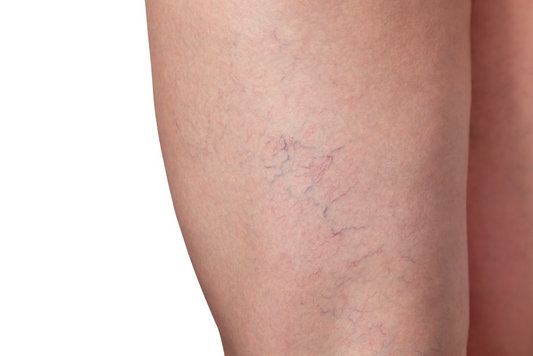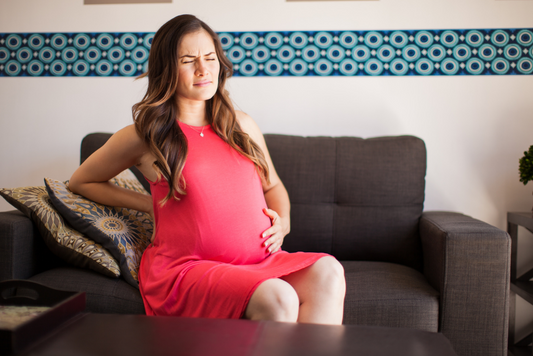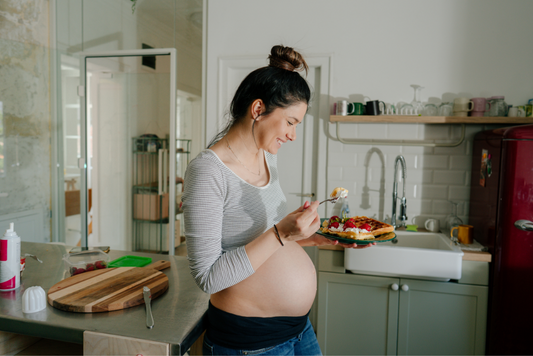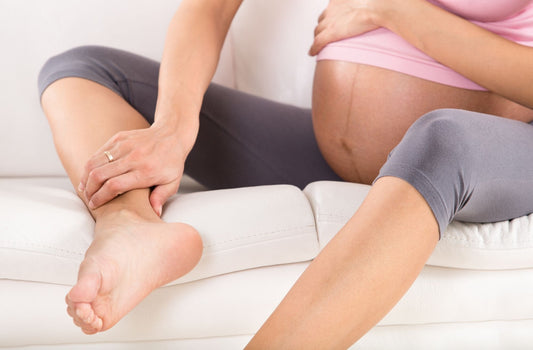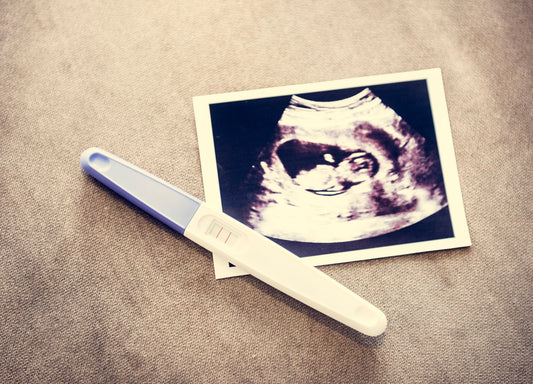

News
How to Boost Your Immune System Safely While Pregnant
When you are pregnant many things change inside your body, you might have morning sickness, back pain, cravings, mood swings, swollen ankles and not to forget that there is another human growing inside your belly. With changing hormones your immune system can get weakened as well. Getting sick while pregnant is not great and in some cases might have consequences for your baby. That’s why it is important to take care of yourself and your body. There are tips and tricks to boost your immune system and make you more resistant to illnesses.
Why is my Immune System Weakening While Pregnant?
The reason for that is simple. Your immune system is responsible for attacking foreign things like bacteria, viruses, etc but as your baby is a foreign invader as well, your immune system would attack it if there would be a change happening. Research has found that the timing of the immune system change is exactly timed to prevent the body from rejecting the fetus.
Getting sick while pregnant is not great and in some cases might have consequences for your baby.
What Can I Do to Prevent Getting Sick in The First Place?
Taking care of yourself while pregnant is very important. Your body needs extra care as it is going through extreme change and works hard to develop your baby and keep you alive.
It is crucial to invest in your health. This can mean different things such as taking time for yourself to rest, eating healthy food, staying in bed to sleep, meditating, etc. Listen to what your body tells you. Taking time for yourself is for sure not selfish.
Eating nutritious food with many vitamins and minerals is important and these two ingredients are directly linked to a strong immune system.
Don’t forget to exercise and get fresh air to keep your body healthy. There is also the option of avoiding heavily crowded places and washing your hands regularly to avoid catching any bugs.
Ways to Boost my Immune System
Get Enough Rest
Yes, sleep and rest are important and might even be one of the most important steps to take. Letting your body recharge and giving it a break from all the stress and hard work of the day is crucial for the body to work properly and protect you and the baby. Your immune system, like all the other tasks your body has to perform, only works with a good amount of rest.
Drink Enough Water
Honestly, water might actually be the cure to many things. It for sure is for staying healthy. Drink 2-3 liters of water throughout the day. Water is recommended but tea can also be counted. Coffee, sweet drinks like sodas, and energy drinks do unfortunately not fall under the ‘healthy’ category and should be avoided.
It helps to have a water bottle or a big glass of water that you measure your water consumption in. If you have a one-liter water bottle you only need to drink two to three of those a day and you can bring it wherever you go and measure your water intake even on the road.
Eat Nutritious Food
You are what you eat! Again this turns out to be very true. You can’t be healthy and boost your immune system only from burgers and fries. It is important to eat vitamins and minerals that can be found in fruits and vegetables. Try eating protein and a low sugar diet and rather choose complex carbohydrates such as oatmeal, wheat bread, quinoa, whole grains, beans, etc. Eating a balanced diet and a good variety of fruit and vegetables can also help you recover way faster if you get sick. But don’t worry, eating a burger once in a while won’t harm you or your baby at all. Sometimes it’s important to eat that comfort food for your mental health and overall happiness so don’t restrict. As long as you switch things up and mix fruits and vegetables, complex carbohydrates, and protein you can allow yourself to have a cheat day!
Think About Vitamins
As your body needs especially many vitamins and minerals to keep your immune system up and running and your body healthy there is the option to take additional vitamins. It is hard to eat as many of them as needed for two people. They don’t replace the vitamins you take in with food but can further help you stay healthy. Talk to your doctor about which vitamins would be beneficial for your situation.
Exercise Regularly
Exercising on a regular basis is important for so many aspects of life. Not only does it increase the blood flow, lowers stress, and strengthens antibodies, it also makes the immune cells perform efficiently.
Avoid Stress
Stress for most is difficult to define and you need to listen to your own body and health to see what works for you and what does not. Being stressed out and nervous can weaken our immune system. The stress hormone called corticosteroid in your body can block and stop your immune system from working properly and you can get sick more easily.
Coming back to taking care of your body, it is important to check in with yourself to see if you need rest. Think about taking on less work while pregnant if that makes you feel better. Remember it’s not selfish to take time for yourself.
In conclusion
Being pregnant is often referred to as a miracle yet sometimes while you are in that stage it might not feel like that. It’s important to listen to your own body and do what feels right for you. With these steps above like eating healthy, drinking lots of water, getting rest and exercising regularly, and more you can boost your immune system and keep yourself and your baby healthy and strong. If you choose to take vitamins, ask your doctor or nurse about it and check what will work for your body.
What Are Spider Veins and How to Treat Them?
Telangiectasia, also known as “spider veins”, is a condition where enlarged venules (small blood vessels) cause patterns or lines in the skin. These patterns are usually red, cluster-shaped, and take a certain amount of time to form. The name spider veins come from the fact that the lines and clusters are usually very thin, giving them a look similar to a spider web. Spider veins usually appear on visible areas, such as the nose, lips, and fingers.
While they are generally harmless or benign, spider veins can be indicators of more serious vein or blood-related issues. However, in most cases, they are nothing to worry about.
What causes them?
Spider veins are caused by the weakening of valves, which are responsible for pushing and transporting blood in the direction of the heart. The weak valves will not close fully, allowing a small amount of blood to leak back into the veins. Eventually, the buildup of blood will expand the walls of the veins, causing them to become more visible and prominent.
Common risk factors for spider veins include:
Chronic alcoholism; which can affect blood flow, as well as the liver
Aging; which is related to the weakening of the venous walls
Corticosteroids; which can weaken and thin the skin
A variety of skin conditions such as dermatomyositis, lupus, or scleroderma
Hereditary factors
What are some of the symptoms?
Spider veins alone, while sometimes uncomfortable, are generally not life-threatening or anything like that.
Symptoms can include:
-Venous pain
-An itching sensation
An example of a serious condition where spider veins are commonly present is hereditary hemorrhagic telangiectasia (HHT). Spider vein clusters form on vital organs and can burst, causing large amounts of hemorrhaging and bleeding.
Symptoms of HHT include:
Chronic nosebleeds
Difficulty breathing
Seizures
Strokes
The appearance of dark, purplish birthmarks
Why can women get them during pregnancy?
It is common for spider veins to develop during pregnancy. Pregnancy is associated with conditions such as increases in overall blood volume, a slower rate of blood flow, and hormone imbalances. All of these factors can cause greater strain on the veins, making them swell or expand, and causing spider veins. It is a perfectly normal condition during pregnancy, and should not be cause for too much concern.
How do you prevent them?
Spider veins are usually just a temporary side effect of pregnancy. After pregnancy, when your blood volume drops to normal levels, they should become less prominent, or disappear altogether. In some cases, however, they remain permanently. Another thing to note is if you develop spider veins during pregnancy, you are much more likely to have them during future pregnancies as well.
It is not really possible for you to prevent the onset of spider veins entirely. That being said, there are ways you can reduce your risk, and minimize its effects:
Eating fibrous foods
A diet rich in high fiber foods might help reduce the effects of spider veins during pregnancy. Constipation, which is another common pregnancy side-effect, heavily contributes to the strain on veins. Fibrous foods will help with reducing strain during bowel movements, particularly on the veins in the legs, and minimize the effects of constipation.
Some examples of high-fiber foods include:
Pears
Strawberries
Apples
Avocado
Raspberries
Carrots
Bananas
Chickpeas
Good levels of vitamin C
Vitamin C is used by the body to produce elastin and collagen, two tissues that help your body maintain and rebuild veins. This will help to reduce the damage done to your veins due to the extra strain on them from the increased blood volume. Vitamin C supplements are widely available and generally safe.
Examples of foods rich in Vitamin C are:
Citrus fruit
Peppers
Blackcurrants
Broccoli
Brussels sprouts
Potatoes
Regular Exercise
Exercise is important for improving blood circulation, as well as the strength of your veins. Because spider veins are especially common on the legs, exercises which target the legs especially are important. Exercising can also help you lose weight. Weight gain is another thing that has negative effects on pre-existing spider veins. Excess weight puts additional strain and pressure on the legs and lower body, causing the veins to expand.
Pregnancy is less than ideal for high-intensity workouts, such as sprinting or heavy weight-lifting, so it is probably a better idea for you to do aerobic, lower-intensity workouts.
Some examples of these include:
Walking
Light jogging
Swimming
Elliptical training
Rowing
Moderate upper-body strength training
Yoga
Position for better blood flow
When you are resting, mostly sitting, try not to cross your legs, or sit in other ways which can restrict blood flow from the legs. Having them elevated actually encourages blood flow to the heart, aided by gravity, and takes some of the strain off of them.
Break up your inactive periods
Long periods of sitting or standing can inhibit blood flow to the heart. Standing especially can put pressure on your leg veins because of the weight of gravity on the blood and vessels. If you have to stand for an extended period of time, try shifting your weight from one leg to another, or moving your legs around to encourage blood flow. While you are sitting, try standing up and walking around every 30 minutes or so in order to increase your circulation.
Compression stockings
Wearing compression stockings, or other compression-designed clothes will help with reducing swelling and improving circulation. They should be worn throughout the day but removed at night. That being said, it is probably a good idea to generally avoid tight clothing, especially anything that constricts your lower-body areas.
Cosmetic surgery
There are certain procedures that can be done to eliminate the visual side effects of spider veins. Laser treatments are a common, but expensive, method of reducing or eliminating visible spider veins. Another method is sclerotherapy, which is when the spider vein clusters are injected with a special solution, causing them to fade and eventually disappear. It is important to note, however, that both of these procedures pose a great deal of risk to yourself and your child during pregnancy. That is why they can only be performed after the pregnancy is over.
How to Relieve Allergies While Pregnant
Pregnancy hormones can affect your body in many ways; one of them can be allergies. It is very common for pregnant women to have allergies during pregnancy. It doesn’t matter if you had them before or not, there is still a high chance of developing them when you are pregnant. There are also cases in which the mother doesn't know about their allergies until she gets pregnant, and they intensify.
There are seasonal allergies which are your body’s immune system fighting against things that might not even be that bad for you, such as pollen or dust. Pollen allergy is widespread. Over 60 million people in the U.S are allergic to pollen. There are pretty common ones such as cocklebur, grasses, trees, pigweed, tumbleweed, etc. that can cause seasonal allergies. Most of the time, your allergies won’t harm your baby, and your pregnancy won’t be affected by them.
Symptoms
In many cases, symptoms can look like a congested nose, itching, runny nose, or headaches. If you have had your allergy before, you might know what your symptoms are and how to tell the difference between a runny nose and an allergy.
As your hormones change during pregnancy, it’s normal to get a stuffy nose around the second trimester. The reason is estrogen and progesterone, two hormones your body produces during pregnancy can increase the amount of blood running through your body, which can lead to mucus membranes swelling, the cause of your stuffy nose.
If you experience itching and swelling in addition to the stuffy nose, then it might be an allergic reaction. Consult a doctor to be sure.
Is it safe to take medication?
As always, it is essential to ask your doctor about how to treat your allergies. If you have struggled with allergies before, don't use the medication unless your doctor says it is safe to do so. There are some things to look for when taking allergy medication—nasal sprays are safer than oral medications as they are less likely to get into the bloodstream.
How to Ease Allergies
Saline Nasal Sprays
Saline nasal sprays are usually safe to use for women expecting a child. You spray the liquid into your nose to reduce the congestion.
Be Aware of Your Triggers
If you have experience with allergies, you often know what triggers them and can try to avoid them as much as possible. You might be allergic to pets, dust, or pollen. You could also experience food allergies while pregnant.
Nasal Strips
These nasal strips can be bought at the pharmacy and are effective in keeping your nasal passage open. They lift both sides of your nose and keep your nose open.
Use a Humidifier
A humidifier adds moisture to the air and can help you with allergies. It doesn’t destroy the pollen or other allergens in the air but can help your body against them.
Benadryl
This medicine is usually considered safe for allergy control but check with your doctor. It blocks histamine that your body uses to form an allergic reaction.
Get Some Fresh Air
Good old physical activity and fresh air can help with a congested nose. Exercise is essential to keeping your body and your kid healthy.
Drink water
It seems like water is the solution to many things, but drinking water isn’t only good for you and your allergies, it’s also good for your baby.
Seasonal Allergies
If you think seasonal allergies might bug you, such as pollen, try to wash your clothes and shower after being outside and vacuum often.
Pets
You might be allergic to your pet's hair. Try to vacuum often.
Apple Cider Vinegar
It doesn’t taste great at first, but apple cider vinegar boosts your immune system and can support lymphatic drainage. It also helps the PH balance of the body and prevents heartburn, which is common during pregnancy. Just mix one tablespoon of apple cider vinegar with one cup of water and consume.
Is Testing Safe?
If you are not sure if you have allergies and your symptoms aren’t clear, an allergy test might be helpful. Some tests are totally safe for mother and baby. A RAST test is an efficient way to test if you have allergies.
This test can be done on more than 400 possible allergies. A blood test can cost anywhere from $100 to $200. Check if your insurance covers it, as many providers do.
After receiving your results, consult with a doctor to see if you can take medication or how to ease your allergies effectively.
Are Allergy Shots Safe?
It isn’t recommended to start with allergy shots while pregnant as they can cause allergic reactions that could potentially harm your baby. If you have been doing shots for a while, you and your baby should be fine. Consult a doctor to be sure.
Summary
Experiencing new or worse allergies than usual is entirely normal while pregnant and many women can get their allergies under control with the help of a doctor and some precautions. It doesn't harm your baby but can be an annoying accompanist during pregnancy.
Be aware of seasonal allergies and keep an eye out if you are not sure what might be causing your reaction. You can also do a safe allergy test. Always consult with a doctor before taking medication.
How to Ease Sciatic Nerve Pain During Pregnancy
What is sciatica nerve pain?
Sciatica nerve pain is pain from the lower back through your hips and buttocks to your lower leg. It’s an irritation of your sciatic nerve which is located around your lower spine and ends in the thigh.
The sciatica nerve is the largest in your body. It makes you feel sensations like pressure, heat, and pain in your lower back, legs, and feet. Its primary function is to send signals to and from your thigh muscle.
You can experience sciatica pain on the outside of your leg in the back or front. It usually affects only one side of the body but in some cases can affect both. Patients often describe it as shooting pain which can range from mild to severe.
What can cause it?
Sciatica related to age is the most common form. Herniated disk and bone spurs can occur with increasing age.
Obesity can also affect the sciatica nerve due to the increased weight and pressure on the nerve.
During pregnancy, especially in the later stages, the weight of the baby can put pressure on the sciatic nerve which can cause sciatica pain.
It can also be caused by Trauma, Tumor, Spinal Stenosis, Piriformis Syndrome, or Spondylolisthesis. Risk factors that can contribute to getting sciatica are degenerative arthritis to the lumbar spine.
Symptoms and What to Look For.
Common symptoms of sciatica include:
Pain in one side of your leg or buttocks
Lower back pain
Numbness or tingling in your legs
Sudden shooting pain from your lower back to your leg
Sitting down causes pain
Prevention
Exercise regularly and focus especially on stretches. Keep your core strong to assure proper posture and good alignment.
Posture is important. It is recommended to choose a good seat with proper support. When you lift something heavy, keep your back straight and don’t twist and lift at the same time.
Ways to relieve sciatica pain:
Usual treatments include massages, physical therapy, or chiropractic care. However, self-treatment stretches are extremely helpful for pregnant women experiencing sciatica.
1. Child’s pose
This is a very relaxing stretch also used in yoga classes. Stretches the spine. Relieves neck and lower back pain and stretches hips thighs and ankles.
Kneel on a mat or any soft surface.
Move your knees out and your feet together until your big toes touch.
Bend down and reach your arms above your head.
The forehead should touch the mat.
Relax your arms.
Repeat multiple times a day.
2. Hip flexor stretch
Also, a yoga pose that stretches your hip flexor and turns on your glutes.
Start on your hands and knees.
Move one leg in between your hands.
Your leg should be at a 90-degree angle.
Now slowly shift your weight forward.
Arms can stay on the ground or by your sides.
Repeat on both sides.
Repeat multiple times per day.
3. Seated Piriformis stretch
This stretch can ease knee and ankle pain and help against sciatic nerve pain.
This pose starts seated on a chair.
If your right side is affected place your right ankle on your left knee.
Try and keep your back straight.
No lean forward until you feel a stretch in your buttocks.
Repeat on both sides.
Repeat multiple times a day.
4. Table stretch
The table stretch is great for stretching your lower back and the back of your legs as well as your buttocks.
Stand with your feet a little wider than your hips.
Face a table or chair.
You must keep your back straight.
Lean forward with your hands holding onto the table or a chair.
Slightly pull your hips back.
You should feel a stretch.
Moving side to side will increase the stretch even more.
Repeat multiple times a day.
5. Standing hamstring stretch
This stretch, as the name says, stretches your hamstring and muscles around the sciatic nerve.
Stand straight.
Place your right leg onto something steady like a bench or a chair.
Flex your toes upwards and slowly bend forward reaching your fingers towards your toes.
Repeat with the opposite leg.
Breathe and repeat multiple times a day.
6. Reclining pigeon pose
This pose is commonly used in yoga and helps open the hips.
Lay flat on your back.
Bring your left leg up so it’s at a 90-degree angle.
Lift your right leg and place your ankle on your left knee. Grab your left thigh with both hands.
Repeat on the other side.
7. Forward pigeon pose
This yoga pose stretches your hips and lower body and increases the flexibility of lower back muscles as well as hip flexors.
Start on all fours. Move your right leg forwards so it’s between your hands.
Bring your right knee to the ground.
Your right foot should be right in front of your left knee.
Stretch the left leg back so your left knee is on your mat and release the toes.
Shift back so the weight is on your legs rather than your arms.
Now slowly bend your upper body forward.
Repeat on the other side as well.
These stretches help reduce inflammation and work against sciatic nerve pain. Long periods of sitting aren’t recommended so take breaks to get up and move around. Exercise caution and patience when stretching.
Some medications help with inflammation and relax your muscles which are also a treatment against sciatica nerve pain. Be sure to talk to a doctor about what’s best for your body.
Food Cravings During Pregnancy - Causes and Different Cravings
We’ve all heard the weird food craving pregnancy stories. Pickles and ice cream, hot dogs and peanut butter, or even pizza with hot fudge on it. And before you ask, yes, these are all pregnancy cravings that real women have had. Besides these food cravings, some women may even experience cravings for things that aren’t even food. In this article, we are going to break down what causes these cravings, common cravings, and foods you should not eat during pregnancy.
What Causes Food Cravings During Pregnancy?
Throughout your pregnancy, you will likely have some pretty intense food cravings. While every woman is different, the cravings typically begin at the end of the first trimester and tend to decline in the third trimester. Food cravings during pregnancy can be weird and volatile. One day you can love a certain food, and during pregnancy just the thought of it makes you want to vomit. Similarly, foods that you used to despise you can now crave. So, what causes this? Well, researchers still have not been able to determine the exact reason for food cravings during pregnancy but there are a variety of theories.
Hormones
As with almost anything when it comes to pregnancy a possible culprit for your food cravings is hormones. Your rapid change in hormones can cause your senses to go crazy. You can smell and taste things much better which can influence the way you experience food.
Changes to your Senses
During pregnancy, your senses become very sensitive. You can smell things much better and this can affect the foods that you crave. Foods with particularly pungent odors may turn you away, while foods that smell good can increase your cravings for them.
Nutritional Needs
Your body craves the nutrients it needs. If you suddenly find yourself dying for a glass of orange juice, your body may be telling you that it needs some Vitamin C. The same goes for your pregnancy cravings. Because you are growing a new life inside of you, your body will need more of certain nutrients. These can include calcium and iron. Unfortunately, our bodies are not very good at telling us what foods to eat to get these nutrients. For example, if you have an intense craving for chocolate your body most likely is deprived of magnesium. Chocolate doesn’t have a large amount of magnesium in it, but that doesn’t stop the cravings. This is the same with pregnancy cravings. Make sure you have a well-balanced diet with all of your necessary nutrients.
Comfort
With your fluctuating hormones and increase of stress and anxiety about having a baby, you may find yourself reaching for comfort food. Anybody going through a particularly stressful time can reach for food as a coping mechanism. Pregnancy is one of the most stressful times in a woman’s life, it is only natural that we crave comfort food.
Common Food Cravings During Pregnancy
There are a few foods that many pregnant women tend to crave. One study determined that the most highly craved foods by pregnant women are:
Sweets
Fast Food (particularly high calorie, high carbohydrate foods)
Fruits
Animal Protein
Other common cravings include:
Pickles
Ice cream
Fruit juice
Dairy
Vegetables
Chocolate
In addition, many women crave a combination of these foods. That’s where weird pregnancy cravings come from such as pizza (fast food) with chocolate on it (sweet). Not only that, but some women are known to crave food outside of their dietary restrictions. For example, a woman who eats a vegetarian diet may find herself craving meat. This can be an indication that you are iron deficient. If you want to maintain your vegetarian diet you can try to add more iron-rich foods to your diet. Or if you are not too stringent, you can just give in and eat meat during your pregnancy.
Foods Not To Eat During Pregnancy
Most of the time it is perfectly fine and normal to give in to your pregnancy cravings. Sometimes, this is not the case. Some foods that you may crave can cause complications in your pregnancy. Foods like sushi, undercooked meat, soft cheese, and deli meats can lead to bacterial infections. Similarly, many women crave alcoholic drinks. This can be easily remedied with a virgin version of the drink.
Dangerous Cravings During Pregnancy
Some of the oddest cravings that can come from pregnancy are cravings for non-food items. Women have been known to crave cigarettes, concrete, detergent, or even paint chips. Craving non-food items is a condition called pica. Pica is not uncommon in pregnant women and usually is an indication of a nutritional deficiency. Make sure you talk to your doctor about your cravings so they can recommend a good course of action, such as supplements or an adjustment to your diet.
Key Takeaways
Food cravings during pregnancy are normal and expected. In fact, one study determined that 50-90% of women experience some form of pregnancy cravings. While there is no definitive reason for these cravings there are a few theories. These theories include changing hormones, changing nutritional needs, a change to your senses, and a desire for comfort. There are a lot of common food cravings and even some cravings that can be dangerous to you or the baby. Thankfully, most food cravings go away after pregnancy, but now you have to deal with the extra weight from all those cravings. Investing in a Bellefit postpartum girdle can help you feel better faster so you can get to exercising sooner. Get back into your pre-pregnancy body and get healthy by purchasing a postpartum girdle today!
Questions To Ask During Maternity Hospital Tour
With all of the things you have to prepare for when you find out you are pregnant a maternity hospital tour may not be at the top of the list. However, this can make or break your labor and delivery experience. There are many policies and practices in place at the hospital that will affect your labor and delivery. So, that is why it is important to ask questions. If you have a particular birth plan you want to stick to, this is especially important. To make sure you have the best labor and delivery journey, we have put together a list of questions to ask during a maternity hospital tour.
What to Expect on a Maternity Hospital Tour
While the labor and delivery process can be overwhelming and confusing, it doesn’t have to be. Having as much knowledge as possible before you even go to the hospital can greatly relieve your anxiety and nerves. Many women choose to go on a hospital tour of their preferred hospital so that they know what to expect. While a hospital tour is an excellent idea, it won’t necessarily give your all of the information you may need.
A maternity hospital tour typically takes about 20-30 minutes to complete. They are most often guided by a labor and delivery nurse or a hospital educator. Their job is to get you acquainted with the layout of the hospital and make you feel more comfortable and at ease. They will usually cover where you should park, where you will check-in, where the labor and delivery rooms are, and where the postpartum/recovery rooms are. Now while this can be very informative, you may still have questions. So don’t be afraid to ask them. If you are not quite sure what you should be asking, don’t worry we have made a list of questions to ask during a maternity hospital tour.
Questions to Ask During Maternity Hospital Tour
Depending on your personal birth plan and concerns, you will have questions only pertaining to a few subjects. We have separated into different topics to make it easier to find the relevant questions for you. The topics are labor and delivery questions, C-section questions, and postpartum recovery questions.
Labor & Delivery Questions to Ask During Maternity Hospital Tour
Where is the check-in area for labor and delivery? Is there a different check-in area at night?
Is there check-in paperwork that needs to be done? Can we do it beforehand?
What do I need to bring with me to the maternity ward? Do I need to bring my medical chart or can it be sent over?
Is there a triage process? How long do women typically stay in triage?
What is the birthing room situation? Is there a separate room for birthing? Or can I stay in the same room for all stages of the labor process?
Are the rooms shared? Can I get a private room if I want one?
What happens when all of the birthing rooms are taken? Is there an overflow area?
What amenities are provided in the labor and birthing rooms? Are their showers and tubs? Are there birth balls? Is there a music hook-up?
Is food allowed in the rooms? Will I be able to eat and drink during labor? What food can I bring from home?
How many people are allowed in the room with me? Are children allowed?
Is there a chair/bed/cot for my partner to spend the night in the room with me?
Are IV’s required?
What pain management options are available?
What type of fetal monitoring do you have available?
Do you have any labor and delivery statistics for me to look over? Such as what percentage of women are induced? What is the percentage of women who are given an emergency C-section? Etc.
Should I send/bring my birth plan? If my doctor/midwife is not on-call, will the on-call doctor go with my birth plan?
Will I be able to labor at my own pace or will I be put on a time limit?
What positions can I give birth in?
Are there doulas here?
What are the policies on cameras and filming equipment?
Would I be allowed to take the placenta home afterwards?
Is there a NICU in the hospital? How far away from the delivery rooms is the NICU? If there is not a NICU, what is the protocol for getting a baby to the NICU?
C-section Questions to Ask During Maternity Hospital Tour
If my Cesarean is planned where do we go to check in?
Will my partner be allowed in the room for the delivery?
Can I have photos of the birth?
Will I be able to watch the surgery via mirror, clear drapes, or lowered drapes?
Will I be able to have skin-to-skin contact with my baby immediately after birth?
If my baby needs to be taken from the room can my partner go with them?
What medications are available during and after delivery?
Postpartum Recovery Questions to Ask During Maternity Hospital Tour
What pain relief options are available postpartum? Are they different for Cesarean births?
How long is the average stay after labor and delivery?
Is there an early discharge policy?
Are the postpartum rooms private?
Can babies sleep in the same room as me?
Can pediatricians do bedside visits?
What is your visitor policy? Are young children allowed?
Do you have a lactation consultant? Are they available 24/7?
What is your policy on breastfeeding over bottles?
Can siblings visit?
Are pacifiers used in the nursery? If they are, will I be asked for approval prior to their usage?
Does the nursery use formula? Will I be notified before formula is used?
What new parent support is offered?
Key Takeaways
The labor and delivery process can be stressful and overwhelming. There are so many moving parts and questions to ask that you can lose track. Hopefully this list of questions can help ensure that you have all your questions answered. Make sure that you are well-informed and are comfortable with your hospital's policies. Some hospitals will offer a postpartum girdle to help with pain after labor and delivery. If your hospital doesn’t offer this, go to Bellefit and get one for yourself. Our postpartum girdles offer medical-grade compression and proven to effectively reduce pain. Don’t suffer with pain and discomfort when we are here to help. Get your Bellefit postpartum girdle today.
Swollen Feet During Pregnancy: Causes, Risks, and Treatments
Swollen feet during pregnancy is a common occurrence and is completely normal. You may notice your shoes getting tighter, or your ankles getting larger as you get closer to your due date. In this article, we will discuss what causes swollen feet during pregnancy and how to get some relief.
What Causes Swollen Feet During Pregnancy
Thankfully early in your pregnancy, you are unlikely to notice any sort of swelling in your feet. You may notice a little bit of bloating in your first trimester as your hormone levels increase, but it will more than likely only get a little puffy. Most women do not experience any swollen feet in the first trimester.
In the second trimester (particularly starting weeks 22-27), as your pregnancy progresses you will likely begin to notice your shoes fitting tighter and your rings getting stuck on your fingers. This swelling is due to an increase in fluid retention and an increase in blood flow. As your body prepares for labor, it begins to hold onto extra fluid - softening the bodily tissues and preparing your body for birth.
The third trimester is when swollen feet are the most common. At this stage, your body really begins to store any extra fluid available and soon your toes and fingers begin to become unrecognizable. In addition, the increased pressure from your growing uterus can slow the blood flow from your legs to your heart. This isn’t dangerous, it is just uncomfortable.
Are there Risks with Swollen Feet During Pregnancy?
Swollen feet are a very normal part of pregnancy. More often than not, your swollen feet are just a sign that your body is doing its job and preparing for birth. However, there are some cases where swelling is cause for concern.
One condition, known as preeclampsia, includes rapidly swelling feet as a symptom. Preeclampsia is a condition that causes severe high blood pressure and it must be treated immediately. However, preeclampsia comes with other symptoms as well. The symptoms for preeclampsia include:
Sudden/rapid swelling of feet, hands, eyes, and face
Dizziness or blurred vision
Severe headache
Difficulty breathing
In addition, if you notice swelling on only one foot/leg it can be a symptom of deep vein thrombosis. DVT is a blood clot that needs to be treated. If you have any concerns at all about your swelling feet, talk to your doctor. They will be able to determine if there is any cause for concern.
How to Prevent/Treat Swollen Feet During Pregnancy
While swollen feet may or may not be painful, it can definitely become uncomfortable or bothersome. Thankfully there are a few things that you can do to help reduce your discomfort.
Reduce Sodium Intake - Salt increases your body’s water retention. This is on top of your increased fluid retention due to your pregnancy. To reduce your sodium intake you can try to avoid any canned or processed foods, and increase the number of fresh foods you eat.
Stay Hydrated - It may sound counter-intuitive but if your body becomes dehydrated it will hold onto any extra water that is available in your body. This can increase swelling. To combat this make sure you are drinking at least 10 cups of water a day. This will ensure you are hydrated and will decrease your swelling.
Avoid Standing or Sitting for Long Periods of Time - Make sure you are promoting blood flow by avoiding remaining in one position for too long. If you tend to sit for long periods of time, make sure to get up and walk around a little. If you tend to stand for hours a day, try sitting down and resting every hour or so.
Elevate your Feet - elevating your feet at the end of a long day can promote the fluid that has been building up in your feet and ankles to move around. This will decrease your swollen feet during pregnancy.
Sleep on your Left Side - When you are going to sleep at night, make sure you are sleeping on your left side. This relieves pressure off of your inferior vena cava which is a major blood vessel that returns blood to your heart. This will allow your blood flow to increase and circulate more effectively throughout your body.
Get in Some Exercise - Make sure you are getting in some exercise during the day. This can be things like prenatal yoga or even swimming. Both of these exercises increase your blood flow and reduce swelling around the ankles.
Stay Cool - Swelling can increase as the temperature increases. If you are experiencing swollen feet during pregnancy in the hot/warm months, try to stay cool. Use a fan, a cool compress, or even some ice packs to reduce swelling.
Invest in Compression Stockings - Support stockings are a great way to increase your blood flow and reduce swelling. In order for them to be effective, you will have to put them on in the morning before your day starts. This reduces the amount of swelling as the day progresses.
Takeaway
Swollen feet during pregnancy are completely normal and expected. They are caused by your body increasing its fluid retention as it prepares for labor. Thankfully, there are things you can do to get relief and prevent the swelling. In addition, your body will slowly go back to normal after you have given birth.
If you are looking to decrease postpartum swelling try out some of Bellefit’s postpartum garments. We have compression leggings, postpartum girdles, and shapewear. Get back to looking and feeling your best after pregnancy.
We hope this has been a helpful article and that you found some ways to get relief for your swollen feet during pregnancy.
Pregnancy Facts: A Month by Month Overview
These pregnancy facts can help you determine what to expect and how to react. Over the course of your 40 week pregnancy, you will experience a lot of changes. Some of these will be physical changes, and some will be mental. In order for you to better prepare yourself for the journey, we created a month by month overview of what to expect.
First Trimester Pregnancy Facts
The first trimester of pregnancy is considered the first 12 weeks of pregnancy. That means that the first trimester is about 3 months long. So what can you expect in those months?
Month 1
The first month of your pregnancy is usually the one where you discover you are pregnant. Some women may not find out they are pregnant until the second month of pregnancy – so it really depends on your body. The major physical change in the first month of pregnancy is your hormones.
Your hormones in the first month are extremely elevated and your body is not used to these hormones. This can cause nausea, increased urination, breast/nipple tenderness, and even fatigue. One day you could be fine, and the next day your stomach is churning at just the thought of tuna.
Month 2
In the second month of your pregnancy you will typically demonstrate the same symptoms as month one. The nausea may increase to vomiting, and many women make lifestyle changes for the baby’s health. In regards to mental health, increased moodiness may occur due to the increased hormones. And some women may even experience a low sex drive.
Month 3
Good news, in the third month, your body is finally beginning to adjust to the increased hormone levels! Your appetite may return, and you may even find yourself with some pregnancy cravings. Some women may even begin to grow a little tummy. This is also the month where you will finally be able to hear your baby’s heartbeat.
Second Trimester Pregnancy Facts
After your first trimester, the second trimester feels like a breeze. Your body has finally adjusted to the hormones, and your stomach isn’t big enough for you to begin feeling uncomfortable. Many women claim that the second trimester is the best trimester.
Month 4
Physically you are going to start feeling much better. Your hormones have stabilized and your appetite has likely returned. You may feel a little heartburn as the uterus grows upward towards the stomach. Your energy will likely increase and you might even get back your sex drive.
Mentally, get ready because the fourth month is where a lot of things can happen. The baby is finally big enough for you to really begin to have a little bump. And you may even begin to feel the baby moving around. Not only that, but you also can have your ultrasound around this time. Your first picture of your new baby!
Month 5
In terms of pregnancy facts – your uterus is the size of a cantaloupe. That means that most women gain between 5 and 15 pounds by this time. Your increasing uterus means you will begin to have a larger appetite, your heart will have to work a little bit harder, and you might get a little bit of constipation.
“Pregnancy brain,” is a fancy term for forgetfulness, and it usually kicks in around this time. Just don’t forget that this is the month where your doctor can determine the baby’s gender.
Month 6
Ok, we are closing in on the end of the second trimester. It took a lot of energy and time to get to this point, but you are almost in the home stretch. This means that it is crunch time. The baby is going to start growing incredibly rapidly at this point, so you may gain some weight – about a pound a week. Your stomach will start to grow bigger, and that may mean stretch marks. Because of this extra weight, you may also get some leg cramps, and even hemorrhoids. Take time to rest, you are growing a baby!
Third Trimester Pregnancy Facts
The last trimester of pregnancy is both physically and emotionally draining. Try not to lose hope, your new baby is almost here. But just to prepare you in the meantime, here are some pregnancy facts for the last three months.
Month 7
In the seventh month your baby is starting to get ready for life. They will begin moving around and you could even see a little hand or foot on your tummy. While this is amazing, it can also be a little uncomfortable, especially when you are trying to sleep. Everyday tasks may become more difficult as your stomach grows and your muscles fatigue easier. You may even get Braxton-Hicks contractions at this point. According to What to Expect, Braxton-Hicks are when “Your uterine muscles are flexing in preparation for the big job they’ll have to do in the near future.”
Your whole body is changing so it is not uncommon to experience: headaches, heartburn, backaches and shortness of breath. Your uterus is growing and pushing on all the surrounding organs, so you may also have to pee more frequently.
Month 8
At this point, your baby is almost fully developed and is now preparing to come into the world. This means that you may begin to feel more pressure in your pelvic region and Braxton-Hicks contractions may increase. All of the other fun things that come in the third trimester are still there, but don’t give up you are almost to the end.
Month 9
Your due date is likely just around the corner, but don’t be surprised if it comes and goes uneventfully. Just be patient, your body and your doctor know what is best, so be sure to stay up-to-date with those appointments. Sleep may be a little hard to come back at this point, but your breathing might be easier. This is because the baby is settling into the pelvic region relieving the pressure on your lungs.
Mentally your “nesting” instincts are going to kick in. You may find yourself incredibly tired one moment and ready to clean the entire house the next. Your mind is just preparing for the arrival of a new family member. Embrace those instincts.
Your Postpartum Body
Yay! The baby is here. Not only is your entire life now changed, but so has your body. If you are breastfeeding you get to look forward to all the changes that come with breastfeeding. And even if you aren’t breastfeeding, your body is still in recovery. Labor is a long and intensive process and now your body is dealing with the sudden changes. It can be a long and painful journey to full recovery, but it doesn’t have to be.
Bellefit creates the best postpartum girdles to make sure your postpartum recovery is smooth and endured with less pain. Coming in all shapes, sizes, colors, and types – Bellefit postpartum girdles are medically designed compression garments that ease your recovery. Make sure you invest in your future self by purchasing a Bellefit girdle.
We hope that this guide of pregnancy facts has helped you to prepare and know what the road ahead looks like. Pregnancy is both terrifying and amazing at the same time. We want to be there to help.
7 Pregnancy Myths, Truths, And Facts
Believe it or not, when it comes to the most common pregnancy myths -or truths?-, many of them have not 100% conclusive evidence debunking or proving them right yet!
Science is always evolving and changing our beliefs. Think about some ideas that hit the ground running back in the 1950s! Did you know that women back then were prompted to light a ciggy as a way to calm down? Or that breastfeeding wasn’t encouraged because formula milk was supposed to be better?
Table Of Contents
Hot Tub Pregnancy Myth
Pregnancy Glow Myth
Hairy Baby And Heartburn During Pregnancy Myth
Guessing Gender In Pregnancy Myths
Cat Litter Pregnancy Myth
Full Moon Myth On Pregnancy
Pregnancy Myths About Food
A Final Word On Pregnancy Myths
Sources
In this article, we’ll share with you some of the most common myths about pregnancy, and where science stands nowadays!
Hot Tub Pregnancy Myth
Will using a hot tub increase the risk of miscarriage?
According to this study and other trusted sources, using a hot tub can increase the risk of miscarriage or birth defects. This is due to the rising body temperature hot water causes –hyperthermia-, not because of being submerged.
The American Pregnancy Association and the Organization of Teratology Information Services also advise that a pregnant woman’s body temperature should never rise above the 102F.
Most experts recommend setting the bath on a lower temperature and staying for 10 minutes or less. Keeping an eye on your body’s and water’s temperature is also a must!
For more information, read Bellefit’s guide about Pregnancy and Hot Tubs.
Pregnancy Glow Myth
That pregnancy glow
Oh…this is a good one. For starters, don’t take it like pregnancy will make you incandescent! There are both supporters and detractors of the ‘magical’ pregnancy glow, which basically asserts that pregnant women’s skin looks radiant and replenished.
Some say this glow comes from the happiness of carrying a child. Others believe it can actually predict your bub’s gender even though there’s no proof for it.
At the end of the day, what doctors do know is that an increased blood flow running through your vessels and hard-working oil glands can cause shiny skin that looks flushed. It’s important to say that not all women experience this! Pregnancy can also cause flaky, dry skin.
There is a lot of shame around this topic though. Pregnant women are still ‘supposed’ to look fabulous and glowy when the truth is…that’s such an unrealistic expectation!
Hairy Baby And Heartburn During Pregnancy Myth
Heartburn and Pregnancy
Is heartburn a sign of a hairy baby? This old wives’ myth had been debunked by professionals over and over. But, surprisingly, a 2006 study done on 64 pregnant women, actually found a relation between heartburn and babies born with a bit of an Elvis Presley style in their little heads.
What scientists have come to fully understand is that high levels of estrogen can increase the levels of heartburn. Heartburn is simply what happens when the sphincter at the base of the esophagus relaxes and lets stomach fluids back into the esophagus.
Funnily enough, the scientists that planned and carried this study, did it so to debunk this myth once and for all…so after the unexpected results, who knows?
Guessing Gender In Pregnancy Myths
Will it be a boy or a girl?
“Girls’ heart rates are faster than boys’ heart rates.”
“Carrying low means it’s a girl, carrying high that’s a boy.”
“Cold feet mean it’s a boy.”
What about testing the electromagnetic field with a golden ring or a needle suspended above the belly?
“If you experience morning sickness it’s a girl…”
So many of the myths about pregnancy that we still hear nowadays are related to guessing the baby’s gender!
We are sorry to say, but there’s no conclusive information proving any of these myths! Pregnancy is such a complex process, and there are still many questions without answers. But in this case, it looks like the classic midwives’ tales about gender guessing have received a major blow!
Cat Litter Pregnancy Myth
Toxoplasmosis and pregnancy
There’s a difference between not being able to pat your cat and being mindful of how you change your cat’s litter.
The Toxoplasma Gondii is a parasite that lives in cat litter and poo, and can potentially cause an unborn child to get sick and show symptoms of the illness during growth.
But, what are the chances of getting Toxoplasmosis while pregnant? First of all, this parasite doesn’t live only in your kitten’s poo. It can also be found in uncooked meat -more on that below!
Many people around the world carry the parasite without developing any symptoms, but the underlying worry can be if a woman gets infected while pregnant.
As experts from Harvard University recommend, you should avoid eating raw or rare meat. Also, try to avoid changing your cat’s litter box on your own. If you don’t have anyone to help you do this, wear gloves and wash your hands thoroughly. Keep your cat indoors, and avoid feeding him raw meat -stick to canned or dried cat food!.
With all these precautions in place, you are still free to pat your kitten!
Full Moon Myth On Pregnancy
Full Moon and Pregnancy
Nowadays, we have some answers about the effect of the moon and its gravitational pull moving tides across the world. But when it comes to the moon’s effect on humans, there are still many questions without certain answers.
As this study explains, our biology is related to seasonal, lunar and circadian rhythms -the sleep-wake natural rhythms and cycles we go through every day.
But what about the old wives’ pregnancy myth that says a full moon can send you into labor? By the looks of it, it’s definitely a myth!
Research published in the American Journal of Obstetrics and Gynecology concluded there were no noticeable differences in the frequency of births across the different phases of the moon.
The study compared the birth certificates of over 500.000 babies born over 62 lunar cycles.
Pregnancy Myths About Food
Food Pregnancy Myths
There’s so much information out there! It can be just-so-easy to get confused or paranoid without really understanding the logic behind some of the most common pregnancy myths around food…
“Eating spicy food can harm the baby”
Spicy food won’t hurt your child. It can cause heartburn and make you feel uncomfortable, so you may want to skip it, but it’s not going to harm your baby!
“You should be eating for 2”
It’s not that you should ‘eat for 2.’ It’s true that your body needs as many nutrients as it can get to grow your baby, but eating for 2 it’s not a free card to give in to sugar cravings every day -that’s a tough one, right?
“It’s not safe to eat fish”
Raw fish and high-Mercury fish can lead to complications during pregnancy. For starters, raw fish is a common cause of food poisoning -so you should avoid it whenever possible. The same goes for uncooked and rear meats, and fish with high levels of Mercury.
For more information on this, check out Bellefit’s guides:
Foods you should avoid during pregnancy
Best foods for pregnant women
Beyond myths, truths, and facts, getting clear on the best pregnancy nutrition you can get is the most important thing!
A Final Word On Pregnancy Myths
Common Pregnancy Myths
We’ve walked you through some of the most common pregnancy myths and, as you can see, there’s some truth behind most of them. The problems start when beliefs and ideas are taken out of context or don’t have a proper explanation. In the end, it all comes down to learning over and over what’s best for you and your baby!
What’s NOT A MYTH after pregnancy? It’s the postpartum belly! Bellefit postpartum girdles were made especially for women after they’ve given birth, who need that extra boost of confidence which usually becomes “lost” after pregnancy.
Bellefit Postpartum Girdles and Corsets – Medical Grade, FDA-Registered, Recommended since 2008, Available in 8 Styles & in Plus Sizes
Sources
https://www.healthxchange.sg/women/pregnancy/pregnancy-food-myths-busted
https://www.bbc.com/news/magazine-32033409
https://academic.oup.com/jn/article/131/2/421S/4686960https://americanpregnancy.org/healthy-pregnancy/is-it-safe/hot-tubs-during-pregnancy/
https://www.nhs.uk/common-health-questions/pregnancy/is-it-safe-to-use-a-sauna-or-jacuzzi-if-i-am-pregnant/
https://www.mayoclinic.org/healthy-lifestyle/pregnancy-week-by-week/expert-answers/pregnancy-and-hot-tubs/faq-20057844
https://www.mayoclinic.org/healthy-lifestyle/pregnancy-week-by-week/expert-answers/pregnancy-glow/faq-20115104
https://www.mayoclinic.org/healthy-lifestyle/pregnancy-week-by-week/expert-answers/pregnancy-glow/faq-20115104
https://www.ncbi.nlm.nih.gov/pmc/articles/PMC5715231/
https://www.ncbi.nlm.nih.gov/pubmed/17150070
https://www.nytimes.com/2007/02/20/health/20really.html
https://healthcare.utah.edu/the-scope/shows.php?shows=0_qtd1io6q
https://www.medicinenet.com/is_it_a_boy_or_girl__myths_and_facts/views.htm
https://www.health.harvard.edu/a_to_z/toxoplasmosis-a-to-z
https://www.ncbi.nlm.nih.gov/pubmed/16407788
https://www.nigms.nih.gov/education/fact-sheets/Pages/circadian-rhythms.aspx
https://www.ajog.org/article/S0002-9378(05)00005-0/abstract
Are Pregnancy Spa Treatments Safe?
A good spa treatment is relaxing. It’s a self-care practice that many women engage in. So, should you worry about your safety while pregnant and receiving pregnancy spa services?
Mood Swings During Pregnancy – 5 Things You Must Know
If you’ve ever experienced mood swings while menstruating, you understand that a change in hormones causes them. The same can be expected while pregnant. It’s not unusual for you to feel emotional throughout your pregnancy. In fact, knowing what is causing feelings of discomfort can help you refocus your energy on something positive and productive.
Table Of Contents
1. You’re not alone in how you’re feeling
2. There is a silver lining to every cloud
3. They’re called your support system for a reason
4. Hunger can cause you to be hangry during pregnancy
5. Laughter lifts your mood fast
Fight Mood Swings After Pregnancy
Wondering when do mood swings start during pregnancy? The first trimester proves to be the most volatile. After that period of time, you can count on things getting better. Knowing how to handle your moods helps the not-so-pretty ones pass quickly.
Here is a list of things you should know about mood swings and pregnancy.
1. You’re not alone in how you’re feeling
It is important to remember that mood swings are a common part of pregnancy and you are not alone in this journey.
Most women feel changes in their body and mood while pregnant. Know that you’re in good company. Join an online community for new moms so you can share your experiences with other women who understand what you’re going through. You will also be able to find numerous tips and tricks on how to manage mood swings during pregnancy. If you do suspect you’re depressed, it’s important to share your feelings with a mental health professional.
2. There is a silver lining to every cloud
Remember, after every storm a beautiful rainbow awaits. Enjoy the beautiful period while it lasts!
When your mood hits rock bottom, it’s important to know that it will eventually pass. One of the fastest ways to shift your mood is to focus on something positive. Even if you’re unable to do an activity that focuses on the thing that you’re thinking about, the thought of it will help bring a smile to your face. Remember fond memories and plans for the future. Allow these things to help you reframe your current situation. You’ll feel in control of your feelings better once you’ve practiced the technique of reframing a couple of times.
3. They’re called your support system for a reason
You do not have to fight the battle alone. Let your loved ones know so they can support you throughout the journey.
Rely on your spouse, family, and friends in times of need. Talk to them about how you’re feeling. They may be able to give you advice and help you through the mood that you’re experiencing. After all, they know you very well and can distract you with funny stories or an impromptu shopping trip so that you forget how mad or sad you were when you first spoke to them. Knowing what helps with mood swings during pregnancy can go a long way in helping you ease your emotions.
4. Hunger can cause you to be hangry during pregnancy
Keep nutritious snacks in hand to keep those hunger pangs at bay.
Keep a supply of nutritious, filling snacks on hand to see you through the day. That way, you don’t confuse hunger for an emotion. You may be feeling tired and irritable because you haven’t consumed enough calories. Hunger can aggravate your mood swings during pregnancy. Look for nutrient-dense options that fill you up and help you sustain blood sugar levels. That way, you’re not crashing fast after loading up on carbs.
5. Laughter lifts your mood fast
Fun Fact: Laughter can help alleviate mood swings and boost your mood significantly!
Go on and laugh your way to a good mood. Turn on a funny video or listen to a comedy podcast. Call your funniest friend and ask them to speak to you in a ridiculous accent. It may sound crazy but it works! These seemingly peculiar tips will make coping with mood swings during pregnancy easier.
Fight Mood Swings After Pregnancy
Mood swings and irritability during pregnancy are to be expected, especially considering the weight a woman puts on while carrying a child as well as physical symptoms such as swelling and nausea. But many women don't realize that you can have mood swings after pregnancy too!
After pregnancy, your hormones have to adjust back to their normal level. This leaves many women emotional, and many women have to adjust to their new post-pregnancy body. Not only do you have to care for a new baby but you also have to take care of your own body, especially right after you give birth.
A lot of discomfort that comes after giving birth can be relieved with a comfortable postpartum girdle. In fact Bellefit has some girdles that are specifically formulated to offer firm support to your back and lower abdomen. These girdles, help take the pressure off your back, relieve back pain, combat diastasis recti, and help you feel comfortable in your body again.
Being able to recognize what triggers your mood is important as it will allow you to determine the best way to cope with the way that you’re feeling. It could be as simple as deep breathing or eating a protein-rich snack when you’re hungry. Don't worry about the excess calories! Once your beautiful pregnancy journey comes to an end, you can also use Bellefit's postpartum corsets to bounce back in shape!
Bellefit Postpartum Girdles & Corsets - Medical-Grade, FDA-Registered, Recommended Since 2008. Available in 8 Styles as well as Plus Sizes.
Do you think a healthy diet - coupled with a few lifestyle changes – are enough to effectively manage those crazy mood swings during pregnancy?
5 Tips on How to Get Your Baby to Move in Utero
Feeling your baby kick for the first time is a truly remarkable thing. It allows you to connect with your baby as early as now. This article will teach you how to get your baby to move more in your womb!

